
Please, support PV!
It allows to keep PV going, with more focus towards AI, but keeping be one of the few truly independent places.
It allows to keep PV going, with more focus towards AI, but keeping be one of the few truly independent places.
AVCHD maximum image quality settings and testing
-
66M AQ2 Motion
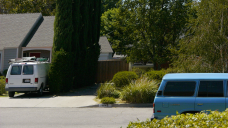
 66 mbps AQ2 1-2000 Motion HDMI.png1920 x 1080 - 4M
66 mbps AQ2 1-2000 Motion HDMI.png1920 x 1080 - 4M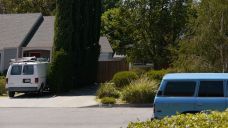
 66 mbps AQ2 1-2000 Motion AVCHD.png1920 x 1080 - 3M
66 mbps AQ2 1-2000 Motion AVCHD.png1920 x 1080 - 3M -
88M AQ2 Static
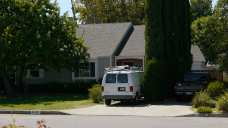
 88 mbps AQ2 1-2000 Static HDMI.png1920 x 1080 - 4M
88 mbps AQ2 1-2000 Static HDMI.png1920 x 1080 - 4M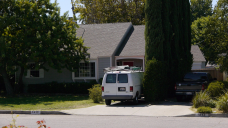
 88 mbps AQ2 1-2000 Static AVCHD.png1920 x 1080 - 3M
88 mbps AQ2 1-2000 Static AVCHD.png1920 x 1080 - 3M -
88M AQ2 Motion
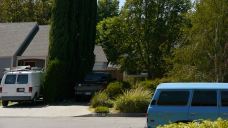
 88 mbps AQ2 1-2000 Motion HDMI.png1920 x 1080 - 4M
88 mbps AQ2 1-2000 Motion HDMI.png1920 x 1080 - 4M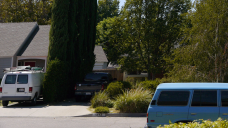
 88 mbps AQ2 1-2000 Motion AVCHD.png1920 x 1080 - 3M
88 mbps AQ2 1-2000 Motion AVCHD.png1920 x 1080 - 3M -
Crazy! Look how far you guys pushed this whole thing. We're talking about minimal differences between AVCHD and HDMI recording. VK, Chris and all guys testing and helping, you are now in my book of cool people ;)
-
-
@Ralph_B - Amazing! Thank you.
-
@Ralph_B What a kick-ass test. So cool to use the HDMI version as reference.
-
@Ralph_B - What were your camera settings for these? What ISO?
-
Shutter speed was 1/2000 ISO 640 Lens: 14-140 @ 45mm f6.3
I may do some night tests at high ISO to see if any differences are more obvious. -
Ralph, is there any chance you could repeat the 66 AQ2 test with ISO 160. Sure you're busy, but if the opportunity arrises... Thanks again for all you're doing.
-
@cosimo_bullo
Not sure what the point would be. The original 66 AQ2 test (one page back) was done at 1/1000, ISO 320.
What do you think we would learn that we don't already know? -
I'll take a look at the 320iso results. Probably will tell me everything I want to know. Thank you.
-
Sorry to throw a monkey in the wrench here but here's a thought after our limited testing this evening. I think we may be going about this wrong (to some extent) in that we're looking for the 'best' overall settings, but not keeping in mind just how much ISO changes how a given setting performs. For example, cbrandins 66 AQ2 looks really great in the shadows at 160 ISO, but bump the ISO to 640 and the shadow detail starts to block up. At 640 ISO, eiji's very high 132 gop3 AQ2 looks better than the 66 setting. But at 160 Chris's settings look as good (if not possibly a little better) than eiji's. I guess what I'm trying to say is that maybe we should make sure we're on the same page ISO-wise as we test different settings. For example, we rarely use high ISO settings, so the goal would be to find the best settings for 160-320 ISO. Others may do a lot of night shooting and would want to tailor to 1600-3200.
Ralph, you asked about the point of testing AVCHD vs HDMI at 160 iso. The point is that I believe the GH2 codec is so much happer dealing with 160 (even vs 640) that the shadow results with AVCHD will be much stronger vs HDMI. I hope. Right now there's still a lot of break up in there, leaving me at least looking at the HDMI image with a wistful sigh. -
"Right now there's still a lot of break up in there, leaving me at least looking at the HDMI image with a wistful sigh."
There is? In the grabs here? Where? At best I can see a minor difference between the 88mb hdmi and 44mb avchd
and that takes a pretty magnified look. With the same bit rates I can't see any difference, at least on these grabs.
"A lot of breakup". You make it sound like the avchd at these bitrates is a mess.
I also don't understand why you're not doing some tests yourself. You seem to know a thing or two.
-
Thanks Ralph, that explains the noise (ISO640) in the shadows (front of house).
I happened to notice there is more visible chroma noise in the HDMI capture.
Is the chroma noise being somewhat masked by the compressed codec, or does the HDMI have
a higher contrast and increased chroma? I see the color temp difference. -
@cosimo_bullo
You bring up an interesting point. It makes sense that ISO would have some effect on compression since the codec interprets noise as motion.
I'm currently in the middle of doing some nighttime tests which may give us some additional insight. -
@chauncy - You're right, I'd love to be doing more real testing, but we're slammed here. That said, fairs fair so I'll at least get a few screen grabs here to show what I'm seeing. These are 640: First is the eiji 132M gop3, then next the brandin 66M gop12. Both AQ2. Both are 200% and I'm looking only at the behavior of the gradation of the light on the wall.
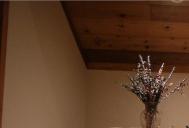
 eiji 132_640.jpg1263 x 856 - 663K
eiji 132_640.jpg1263 x 856 - 663K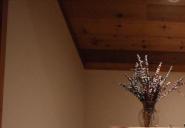
 brandin 66_640.jpg1244 x 859 - 536K
brandin 66_640.jpg1244 x 859 - 536K -
Ralph, great to be talking about this. If you have any chance to do so, please do include eiji's gop 3 AQ2 in your future tests. I think he's on to something.
-
@proaudio4
Yes, in general H264 does blur and smear out the fine noise that's in the uncompressed signal. This is not unique to the GH2. I've seen it in other cameras, as well. However, the still images are a bit deceptive in this regard. When you watch the movie playing back at speed, it appears that the HDMI has LESS noise, because it's so much finer than the compressed noise. -
And here are the same shots at 160 ISO. Again 132 first, the 66 second. Now they look much closer, and in fact are all but indistinguishable as I click back and forth. (whoops, IGNORE the last, brighter photo, it went up by accident and the site won't let me remove... mods??? Help! - please compare only the two darker photos!!!)
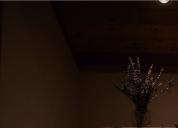
 eiji 132_160.jpg1236 x 887 - 422K
eiji 132_160.jpg1236 x 887 - 422K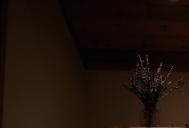
 brandin 66_160.jpg1263 x 856 - 359K
brandin 66_160.jpg1263 x 856 - 359K -
@cosimo_bullo I don't get why this question of it being at a Higher ISO (therefore noiser) is something worth chasing in this thread. The fact that 132M GOP 3 looks better is obviously going to be true because it's GOP3 and will therefore smear the noise less because the frequency of I-Frames is multiplied by 3. If you ran 66M at GOP 3 (which we can't at the moment) it would be indistinguishable at High ISOs to the 132M settings as it is with low ISOs (given other tests we've seen relating to extreme colour correction accross the bitrates). Image quality of a lower GOP (in terms of image noise) if you are shooting at High ISOs will be better, but thats a given we'd expect I think, it's not something that we need to test.
Edit: Granted though, if you are shooting in low light with a High ISO, want maximum IQ, and can afford the increase in file size of running at 132M (and much shorter shots) then switching to a GOP 3 is going to make sense. Though you may not like the look of the motion. Because of the way the codec works, compression is going to be worse in areas of shadow. If you shoot at a High ISO a scene with very little shadow then I think the differences between the 66M and 132M would be a lot closer accross the frame. -
I reckon (probably wrongly) that the best settings accross all conditions (with reasonable bitrates) will be found with either 66M GOP 6 AQ 3 or 66M GOP 3 AQ4. The lower GOP would compensate for the drop in motion rendering quality resulting from the higher AQ as well as improving the noise in shadows (as a higher AQ will too). We just can't get those settings (yet).
-
Hello. I want to use 720 50p and 1080 50i mode! What settings should I use?
*PS What is the difference between 720 50p and 1080 50i mode (Sharpness and quality)?
Thank you! -
Round three of HDMI vs AVCHD
Tonights contestants are:
Chris's 44M AQ4
Chris's 66M AQ2
Chris's 66M modified to AQ3
Chris's 66M modified to AQ4
Eiji's 132M GOP3 AQ2
This is an extreme low light test. Lens: Minolta Rokkor 58mm f1.2, ISO 6400, shutter 1/50.
OBSERVATIONS:
Static -
The three 66M's and 44M AQ4 are all very close, but I feel 66M AQ3 and 44M AQ4 have a slight edge.
But the hands down winner is 132M AQ2 GOP3. It's so close to the HDMI that... well, draw your own conclusions.
Motion -
It's difficult to judge motion because there's so much motion blur at 1/50 sec shutter.
I personally feel that at high ISO's and slow shutter speeds, motion is a non-issue. All details are lost in a sea of noise and motion blur. All of the settings basically look the same as the HDMI. The only difference is how they handle the noise. And here they follow what they did in the static test. So, I'm not going to waste your time by posting the motion pictures.
Up Next -
I'm impressed with Eiji's 132M GOP3. Tomorrow I'll test it in daylight along with Chris's 66M modified to AQ3.
Chris's 44M AQ4 Static
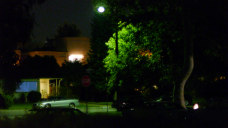
 Night 44 mbps AQ4 1-50 Static HDMI.png1920 x 1080 - 2M
Night 44 mbps AQ4 1-50 Static HDMI.png1920 x 1080 - 2M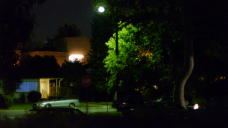
 Night 44 mbps AQ4 1-50 Static AVCHD.png1920 x 1080 - 2M
Night 44 mbps AQ4 1-50 Static AVCHD.png1920 x 1080 - 2M -
Chris's 66M AQ2 Static
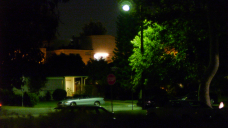
 Night 66 mbps AQ2 1-50 Static HDMI.png1920 x 1080 - 3M
Night 66 mbps AQ2 1-50 Static HDMI.png1920 x 1080 - 3M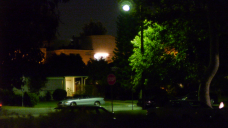
 Night 66 mbps AQ2 1-50 Static AVCHD.png1920 x 1080 - 2M
Night 66 mbps AQ2 1-50 Static AVCHD.png1920 x 1080 - 2M
This topic is closed.
← All Discussions Start New Topic


Howdy, Stranger!
It looks like you're new here. If you want to get involved, click one of these buttons!
Categories
- Topics List23,993
- Blog5,725
- General and News1,354
- Hacks and Patches1,153
- ↳ Top Settings33
- ↳ Beginners256
- ↳ Archives402
- ↳ Hacks News and Development56
- Cameras2,368
- ↳ Panasonic995
- ↳ Canon118
- ↳ Sony156
- ↳ Nikon96
- ↳ Pentax and Samsung70
- ↳ Olympus and Fujifilm102
- ↳ Compacts and Camcorders300
- ↳ Smartphones for video97
- ↳ Pro Video Cameras191
- ↳ BlackMagic and other raw cameras116
- Skill1,960
- ↳ Business and distribution66
- ↳ Preparation, scripts and legal38
- ↳ Art149
- ↳ Import, Convert, Exporting291
- ↳ Editors191
- ↳ Effects and stunts115
- ↳ Color grading197
- ↳ Sound and Music280
- ↳ Lighting96
- ↳ Software and storage tips266
- Gear5,420
- ↳ Filters, Adapters, Matte boxes344
- ↳ Lenses1,582
- ↳ Follow focus and gears93
- ↳ Sound499
- ↳ Lighting gear314
- ↳ Camera movement230
- ↳ Gimbals and copters302
- ↳ Rigs and related stuff273
- ↳ Power solutions83
- ↳ Monitors and viewfinders340
- ↳ Tripods and fluid heads139
- ↳ Storage286
- ↳ Computers and studio gear560
- ↳ VR and 3D248
- Showcase1,859
- Marketplace2,834
- Offtopic1,320






